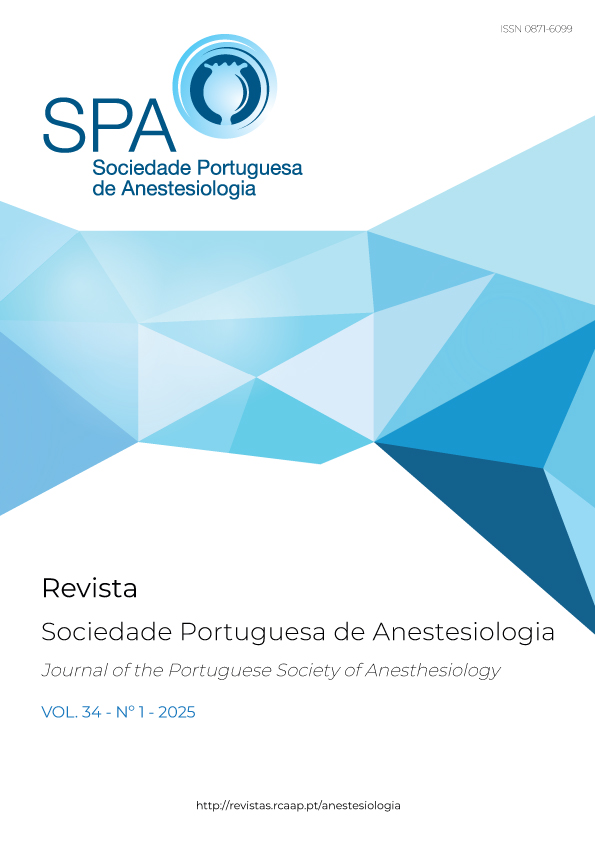Initial Anesthetic Experience in Robotic Cardiac Surgery: Case Series from a Tertiary Care Centre in India
DOI:
https://doi.org/10.25751/rspa.39817Keywords:
Anesthesia, Cardiac Surgical Procedures, Minimally Invasive Surgical Procedures, One-Lung Ventilation, Robotic Surgical ProceduresAbstract
One of the most recent developments in surgical practice is minimally invasive robotic surgery. The use of surgical robots facilitates less invasive surgery. This approach to cardiac surgery offers numerous potential advantages to the patient, including reduced pain, shorter hospital stay and a quicker return to the day-to-day activity. Robotic surgery requires anesthesia personnel to incorporate various subspecialty skills to improve patient outcomes. In the era of minimally invasive surgery and the rising popularity of robotic cardiac surgeries, the cardiac anesthesiologist must be well versed with the various robotic systems and associated complications, have expertise in transesophageal echocardiography (TEE) and mastering and management of lung isolation techniques. Close coordination and planning with the surgical and perfusion team is essential for ensuring safe patient care. This is a case series that serves to explain some of the anesthetic challenges that were encountered during the commencement of robot-assisted cardiac surgeries.
Downloads
References
Carpentier A, Loulmet D, Aupècle B, Kieffer JP, Tournay D, Guibourt P, et al. Chirurgie à coeur ouvert assistée par ordinateur. Premier cas opéré avec succès. C R Acad Sci III. 1998;321:437-42. doi: 10.1016/s0764-4469(98)80309-0.42.
DeRose JJ, Ashton RC, Belsley S, Swistel DG, Vloka M, Ehlert F, et al. Robotically assisted left ventricular epicardial lead implantation for biventricular pacing. J Am Coll Cardiol. 2003;41:1414-9.
Mohamed A, Shehada SE, Brakel LV, Ruhparwar A, Hochreiter M, Berger MM, et al. Anesthetic management during robotic-assisted minimal invasive thymectomy using Da Vinci system. A single center experience. J Clin Med. 2022;11:4274. doi: 10.3390/jcm11154274.
Bonaros N, Schachner T, Wiedemann D, Oehlinger A, Ruetzler E, Feuchtner G, et al. Quality of life improvements after robotically assisted coronary artery bypass grafting. Cardiology. 2009;114:59-66. doi: 10.1159/000212115.
Rehfeldt KH, Mauermann WJ, Burkhart HM, Suri RM. Robot-assisted mitral valve repair. J Cardiothorac Vasc Anesth. 2011;25:721-30. doi: 10.1053/j.jvca.2011.03.186.
Hafiani H, Choubhi M, Ameur A, Bensghir M, Abouelalaa K. Anesthetic considerations in robotic surgery: a comprehensive review. J Robot Surg. 2024;18:220. doi: 10.1007/s11701-024-01974-y.
Klingstedt C, Baehrendtz S, Bindslev L, Hedenstierna G. Lung and chest wall mechanics during differential ventilation and with selective PEEP. Acta Anaesthesiol Scand. 1985;29:716-21.
Chauhan S, Sukesan S. Anesthesia for robotic cardiac surgery. An amalgam of technology and skill. Ann Card Anaesth. 2010;13:169-175.
Liu TJ, Shih MS, Lee WL, Wang KY, Liu CN, Hung CJ, et al. Hypoxemia during one- lung ventilation for robot-assisted coronary artery bypass graft surgery. Ann Thorac Surg. 2013;96:127-32. doi: 10.1016/j.athoracsur.2013.04.017.
Deshpande SP, Lehr E, Odonkor P, Bonatti JO, Kalangie M, Zimrin DA, et al. Anesthetic management of robotically assisted totally endoscopic coronary artery bypass surgery (TECAB). J Cardiothorac Vasc Anesth 2013;27:586-99. doi: 10.1053/j.jvca.2013.01.005.
Baraka A. Differential lung ventilation as an alternative to one-lung ventilation during thoracotomy. Report of three cases. Anaesthesia. 1994;49:881-2.
Kiaii B, Bainbridge D, Fernandes P. Surgical, anesthetic, perfusion-related advances in minimal access surgery. Semin Cardiothorac Vasc Anesth 2007;11:282-7.
Hong JY, Kim JY, Choi YD, Rha KH, Yoon SJ, Kil HK. Incidence of venous gas embolism during Robotic-Assisted Laparoscopic radical prostatectomy is lower than that during radical retropubic prostatectomy. Br J Anaesth. 2010;105:777-781.
Downloads
Published
How to Cite
Issue
Section
License
Copyright (c) 2025 PRIYANKA GUPTA, SHAILLY KUMAR, UDISMITA BARUAH, Ira Balakrishnan M

This work is licensed under a Creative Commons Attribution-NonCommercial 4.0 International License.
Articles are freely available to be read, downloaded and shared from the time of publication.
The RSPA reserves the right to commercialize the article as an integral part of the journal (in the preparation of reprints, for example). The author should accompany the submission letter with a declaration of copyright transfer for commercial purposes.
Articles are published under the terms of the Creative Commons Attribution Non-Commercial License (CC BY-NC).
After publication in RSPA, authors are allowed to make their articles available in repositories of their home institutions, as long as they always mention where they were published.


